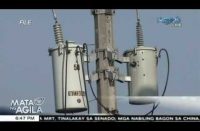United States President Barack Obama has already concluded his two-day state visit to the Philippines. One of the highlights of his visit is the signing of the Enhanced Defense Cooperation Agreement (EDCA). The 10-year agreement allows the US military access to the country’s military bases for the next decade.
This agreement was met with protests as militant groups declared it unconstitutional. They claimed that the agreement was fast-tracked so that it will be signed before Obama’s arrival.
So what does the 10-year agreement entail?
Here are the key points:
1. On US troop deployment, there will be an increased rotational deployment of troops, ships and aircrafts in the territory of the Philippines but US troops will have no permanent presence in the country.
2. US troops may preposition military equipment for the timely response in event of disasters.
3. Bringing of armed drones and weapons of mass destruction, including nuclear weapons, are not allowed.
4. US troops will only be deployed against external threats and not against internal insurgents.
5. Not stipulated are the operational details as well as the number of troops to be deployed, as well as their period of stay in the Philippines.
6. They will provide technical assistance and support and serve as first responders in times of natural calamities.
7. On the matter of criminal jurisdiction and custody of indicted servicemen, the agreement will fast-track the bilateral consultations in implementing the provisions of the Visiting Forces Agreement.
8. On the use of Philippine military facilities, US forces will be allowed to use the facilities in several military camps, including those in Manila, Clark Air Base, Palawan, Cebu, Nueva Ecija and La Union.
9. US troops are allowed to build housing and hangars in Philippine military bases, with prior consent and under full control of Filipino authorities.
10. The Philippines shall own all the buildings constructed by the US forces and will not collect rental fees regarding the use of said facilities.
11. Priority shall be given to Philippine suppliers in the procurement of goods and services.
12. It does not authorize the establishment of US bases in the Philippines.
13. With regard to assistance to the Philippine military, the EDCA provides for more training for air, naval and ground troops, in particular, training in maritime security.
14. It provides for enhanced capability for humanitarian relief and disaster response.
15. It will also help speed up the modernization of the Armed Forces of the Philippines.
16. With regard to the agreement’s scope and duration, the agreement shall have an initial term of ten years, with regular bilateral consultations regarding its implementation.
17. It is classified as an executive agreement within the scope of the US-Philippine Mutual Defense Treaty and the Visiting Forces Agreement.
Those who are for the agreement said it will give our country the much-needed support against the growing aggressiveness of China regarding the territorial dispute in West Philippine Sea.
Others oppose the agreement saying that it violates the Constitution and the sovereignty of the Philippines.
Now that we know the key points of the agreement, we can determine for ourselves whether or not the US-Philippines Enhanced Defense Cooperation Agreement is good or bad for our country.






